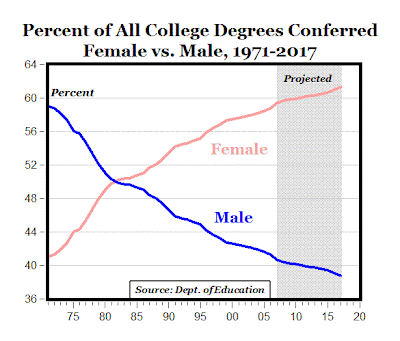Ms. JD reports (here) on Adrienne Suarez’s “Code of Ethics for Female Attorneys.”
1. I pledge to respect the female attorneys who came before me, because their paths were steeper, rougher, and unfamiliar. I pledge to respect the female attorneys who come after me, even though their paths may be gentler, smoother, and well worn. We are all traveling down the same path.
2. I pledge to continue to make the way even smoother for future female attorneys. While women make up 51% of the United States population, we constitute 47% of law students, 32% of lawyers in the legal profession, 18% of partners in private firms and general counsel for Fortune 500 companies, and this figure has remained static since the mid-1990s. (Statistics drawn from reports published here). Clearly, we still have work to do.
3. As a woman, I will not judge other female attorneys who have come before me or who will come after me for (1) getting married; (2) not getting married; (3) having children; (4) not having children; (5) or making any other major life decisions because of, or in spite of, balancing a legal career.
4. Given the choice of being a mentor or a tormentor to a younger, less experienced female attorney, I actively choose to be a mentor. When a younger, less experienced female attorney comes to me with a question or for advice, I will not revel in how much more I know than she; I will share that knowledge and experience.
5. There are no”dues”that a younger, less experienced female attorney needs to pay to me. I will not waste my time minding tollbooths when I have a ways down the path yet to go myself.
6. In the game of law, I will help younger, less experienced female attorneys as though we were playing leapfrog, not red rover.
7. I recognize that even though we may be of the same sex, I will not like every female attorney I meet. I pledge, however, not to call her a”bitch,”or any other name powerful because of its misogynist origins.
8. If my voice is louder or carries more weight, then I will speak up for my fellow female attorneys’ needs, like a flexible schedule, even if those are not my personal needs at the moment.
9. I pledge to reach out, through pro bono service, to the women in my community who need a lawyer’s help, who admire that that lawyer is another woman, and who appreciate how that woman may understand their problems and resolve them justly.
10. I pledge to be me. There is a younger female attorney out there who sees herself in me. I pledge to succeed for her.
H/T Karen Hernandez.
Suarez gets it right in her embrace of mutuality of respect and the importance of mentoring. I don’t think I fully understand the leap frog vs. red rover analogy, though. Is it that the former is a collaborative game in which we alternate serving as the “base” or the one who advances? The latter is an antagonistic test to see if the invitee can break our ranks? (Ok, maybe I do get it.)
The part of the Suarez Code that inspires mixed thoughts are not judging other women (and presumably men) for “making any other major life decisions because of, or in spite of, balancing a legal career.” At a deep emotional level, this makes sense to me. Each person makes her own choice. I can’t judge another because I don’t walk in her shoes. “The personal is political” is an exhausting standard that none of us can ever meet. So instead, let’s focus on the core of feminism. Feminism is all about choice, right? On an intellectual level, I wonder if emptying choice of its social, cultural, and sometimes political content renders choice nothing but a fetish. (Nod to Linda Hirschman here.) In other words, if each of us is making the right choice for us personally, does that preclude critical examination of the implications of the aggregate choices? It may be a great idea for Ms. A to make X career choice, but if most women make X career choice, it will have Y negative ramifications for the legal profession. If we give up critiquing the implications of aggregate choices, then we give up the ability to evaluate women’s and men’s relative positions in law and society.
Suarez’s point more accurately may be that we need to de-personalize our judgments of other women — i.e., if Ms. A wants to do X, then Ms. B should not judge Ms. A as a good/bad person. We should understand that Ms. A’s choices are made in a professional world where many jobs are still designed for men with no children (or at least wives at home to take care of them).
-Bridget Crawford








 Former No. 1 women’s tennis player Jelena Jankovic lost at Wimbeldon earlier this week to Melanie Oudin, a relatively unknown 17-year old American from Atlanta, Georgia. Jankovic she did not lose gracefully or have any words of congratulations for her opponent. According to the New York Times (
Former No. 1 women’s tennis player Jelena Jankovic lost at Wimbeldon earlier this week to Melanie Oudin, a relatively unknown 17-year old American from Atlanta, Georgia. Jankovic she did not lose gracefully or have any words of congratulations for her opponent. According to the New York Times (

 Caroline Kennedy and Barbara Walters are the new stars of two “biography comics” in the “Female Force” series published by
Caroline Kennedy and Barbara Walters are the new stars of two “biography comics” in the “Female Force” series published by  “Fill your desire for something long, juicy and flame-grilled with the New BK Super Seven Incher. Yearn for more after you taste the mind-blowing burger that comes with a single beef patty, topped with American chees, crispy onions and the A.1.(R) Thick & Hearty Steak Sauce.” That’s the text from the Burger King ad above.
“Fill your desire for something long, juicy and flame-grilled with the New BK Super Seven Incher. Yearn for more after you taste the mind-blowing burger that comes with a single beef patty, topped with American chees, crispy onions and the A.1.(R) Thick & Hearty Steak Sauce.” That’s the text from the Burger King ad above.
 Across the nation, people are organizing candlelight vigils to honor the peaceful protests of the Iranian people. Here are a few upcoming vigils:
Across the nation, people are organizing candlelight vigils to honor the peaceful protests of the Iranian people. Here are a few upcoming vigils:



